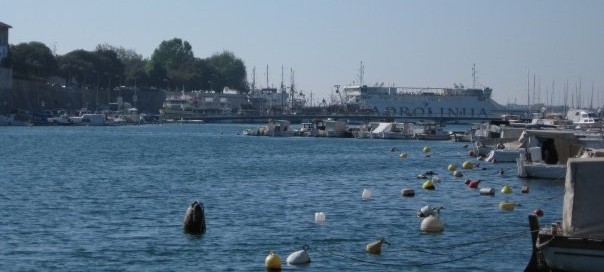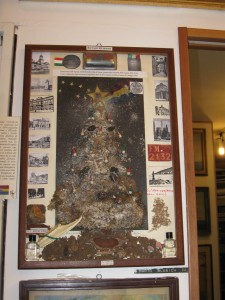
Yesterday, Lorenzo and I went out to the end of the Laurentina Metro Line to a part of the city that is somewhere between being a small town and a suburb. It is still a diasporic community. Italians from Dalmatia and Istria were resettled here after the Second World War and later Italian citizens from Egypt and Somalia. Lorenzo had set up an appointment with Dr. Marino Micich, who runs the Archivio Museo Storico di Fiume. Not only does the library house over 6,000 books, but it also has many rare periodicals, pamphlets and broadsheets as well as family papers of well to do former citizens of Fiume (Rijeka in Croatian). Micich knows every inch of the archives and is the person to talk to when beginning scholarly research on this subject.
Micich’s approach to the history of Fiume is as practical as that of Liliana Venucci of the Rijeka publishing house, EDIT, whom I wrote about in an earlier blog. While Venucci is focused entirely on the now–establishing schools in the Italian language, publishing Italian-language textbooks for children and so forth, Micich really is the keeper of the city’s Italian past. His approach is to collaborate with everyone–the Croatian government, the Hungarian government–constant collaboration.
Micich gave us a great deal of direction as far as our project, urging us to focus on materials such as journals and ephemera. He also agreed to act as a go-between among the various Italian diaspora associations–there are 57 alone in Croatia and Slovenia– to help us identify their local holdings. We also met independently with Colonel Carlo Cetteo Cipriani, who showed us the archives of the Società Dalmata di Storia Patria. Col. Cipriani got us to think further of the vast amount of materials available in state and ministerial archives in Italy and abroad.
As we left the Archivio Museo Storico di Fiume Micich showed us a picture of a Christmas tree that was composed from earth and twigs. It was dry and brittle. The man who had created it had used the earth he had grabbed from his garden and put in his pocket as he fled Rijeka.
But I think rather than ending on such a somber note, I will end on a more positive one. Everyone I talked to had the same questions about how these materials would be preserved in the future. Some steps were proposed: consolidating the archives; digitizing their holdings; and using library students to catalog and scan these materials as part of their practicum. Other thoughts were to work through IFLA or to develop a plan under the auspices of the EU.
The comment I heard most was that Yugoslav history needed to be rewritten to include other narratives. This is essentially what these Italian associations are for–to preserve memory (in a collective sense) and memory (in a personal sense). But that’s another story, isn’t it?
Lorenzo and I will begin our work of creating a bibliography of these materials and writing an article for submission to an Italian academic library journal.
So on that final note I shall leave you with a beautiful and very serene picture of Zadar, as the Croats say, or Zara, as the Italians refer to it.



